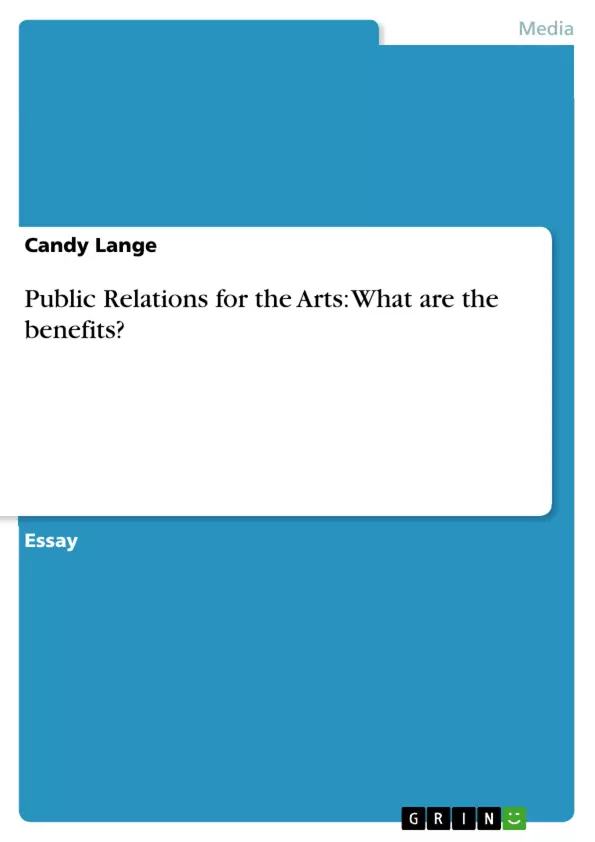Long before the arts and public relations were literally formulated, they were already linked together. With the beginning of civilisation, visual arts were used to influence the public opinion. In ancient Egypt, impressive architecture such as statues and temples were built to represent the greatness of the ruling priests and nobles (Bates, 2002). Art was an essential element of the propaganda machines during World War II. Especially Hitler misused art to propagate his politic opinion amongst the public. Today, a vast range of companies use art in order to receive (hopefully) positive media coverage, e.g. Telecom New Zealand is sponsor of the New Zealand International Arts Festival, the City Gallery in Wellington and the Auckland Philharmonia, and initiator of the Telecom New Zealand International Film Festivals, the White Pages Arts Award and the IHC Telecom Art Award. However, the connection between public relations and the arts must also be seen from another point of view. In terms of arts marketing, the arts can benefit from public relations. What are the benefits for artists and arts organisations, and how can they use public relations in order to promote their products?
Inhaltsverzeichnis (Table of Contents)
- What are the benefits?
- What are Public Relations anyway?
- What is Arts Marketing?
- What can PR do for the Arts?
- Engaging with contemporary art and ideas
- I, Mark Kostabi, am a famous artist. I make millions.
Zielsetzung und Themenschwerpunkte (Objectives and Key Themes)
This essay aims to explore the benefits that public relations can offer to the arts. It analyzes the role of public relations in promoting artists and arts organizations, and how public relations can be used to create a positive image and generate awareness for the arts.
- The historical relationship between the arts and public relations
- The definition and functions of public relations
- The benefits of public relations for the arts
- The ethical considerations of public relations
- The role of public relations in marketing
Zusammenfassung der Kapitel (Chapter Summaries)
- The first chapter explores the long-standing connection between the arts and public relations, tracing its roots from ancient Egypt to contemporary art marketing. The chapter highlights the use of art as a tool for influencing public opinion throughout history.
- The second chapter delves into the definition and purpose of public relations. It outlines the key functions of PR, including communication management, building goodwill, and shaping public perception.
- The third chapter focuses on the application of public relations in the context of arts marketing. It examines the various ways PR can be utilized to promote artists, arts organizations, and cultural events.
- The fourth chapter discusses the ethical considerations and challenges of public relations practice, examining the role of ethical codes and guidelines in ensuring responsible communication.
- The fifth chapter explores the intersection of public relations with marketing. It analyzes how PR can be integrated into a marketing strategy to build trust and understanding for an organization or brand.
Schlüsselwörter (Keywords)
This essay explores key concepts such as public relations, arts marketing, communication management, image building, and ethical guidelines. It also examines the historical relationship between the arts and public relations, and the role of PR in contemporary arts organizations and cultural institutions.
- Quote paper
- Candy Lange (Author), 2006, Public Relations for the Arts: What are the benefits?, Munich, GRIN Verlag, https://www.grin.com/document/63610



